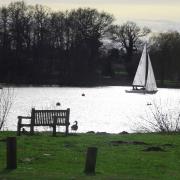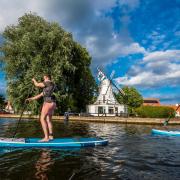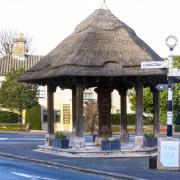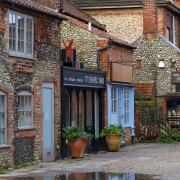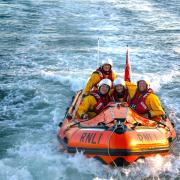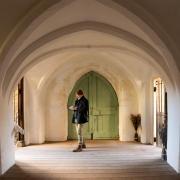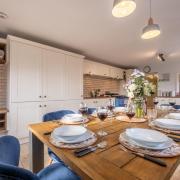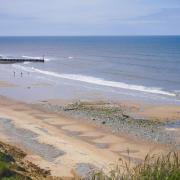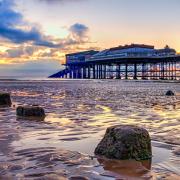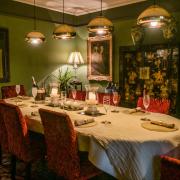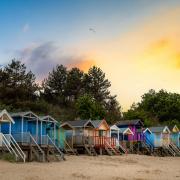The village of Feltwell in Norfolk
We will remember them
War graves are not limited to the vast cemeteries of Flanders. Village churchyards across Norfolk have collections of Commonwealth War Graves too; the final resting places of people from around the world.
The graves, with the distinctive simple white stones, are cared for by the Commonwealth War Graves Commission. Sometimes there might be two or three war graves, but in Feltwell there are 54. Many are memorials to young men cut down in their early 20s. The youngest were boys in their teens.
They stand in the ancient churchyard of St Nicholas, Feltwell. Six date back to the First World War, most of the rest are grouped together in a grassy cemetery enclosed by hedges of thorn and yew with flower borders running along the rows.
Here lie six soldiers and 19 airmen from the UK, alongside 11 Canadians, two Australians and 10 New Zealanders.
Heroes
The village pub, The Wellington, is named after the bombers which flew from RAF Feltwell during the Second World War. The building itself dates back to 1730 and is still at the heart of its community, with regular events, a games club and live music evenings
Its name honours the village’s connection with its wartime pilots – including James Ward who won the Victoria Cross in 1941. The New Zealander was based at RAF Feltwell and flying over Germany as co-pilot when his aircraft was attacked and set on fire. He crawled along the outside of the wing, despite enormous air turbulence, eventually smothering the flames and saving his fellow crew members and the plane.
The act of immense courage won him the Victoria Cross. He met Winston Churchill and was promoted to his command his own Wellington. But just two months later the 22-year-old, who had been a schoolteacher before volunteering for the New Zealand Air Force, was killed taking part in another bombing mission.
Giant golf balls
After serving as a military airfield in both world wars RAF Feltwell was a base for nuclear missiles in the 1960s.
The huge white spheres which dominate the site today are part of the USA’s Space Force surveillance network.
Every day’s a school day
The village primary school is called the Edmund De Moundeford Primary School - but who was Edmund?
His family came from nearby Mundford, so he would probably be Edmund of Mundford these days. He went to school in Wymondham and university in Cambridge and was elected MP for Thetford in 1628 – just a year before Charles I dissolved Parliament for 11 years. He served as MP for Norfolk for the last three years of his life and left money for a free school for the children of Feltwell, plus clothing for the poor, and eight almshouses.
Villas to Victorians
Roman Feltwell was a thriving community. Lavish villas have been unearthed with their own bath houses and underfloor heating systems. Roman coins and pottery have also been found. Its two churches include pretty St Nicholas, where the round tower collapsed more than a century ago, and St Mary’s, renowned for its collection of fine French stained glass, fit for a cathedral, commissioned for Feltwell by a Victorian rector.







